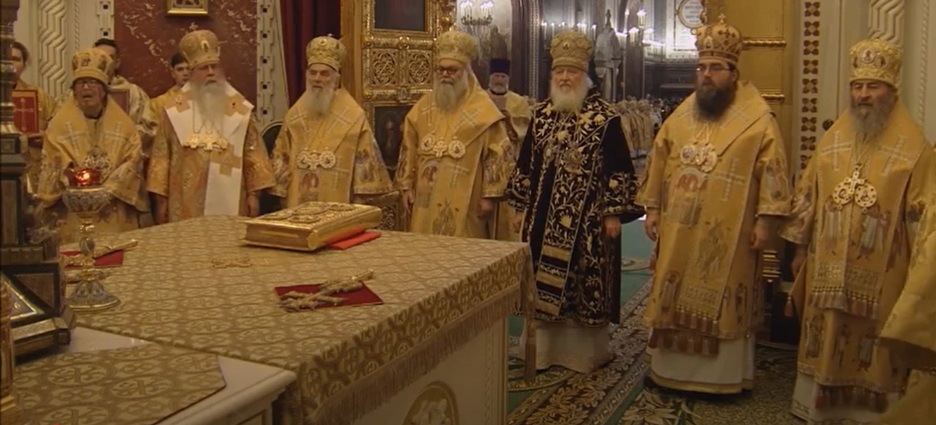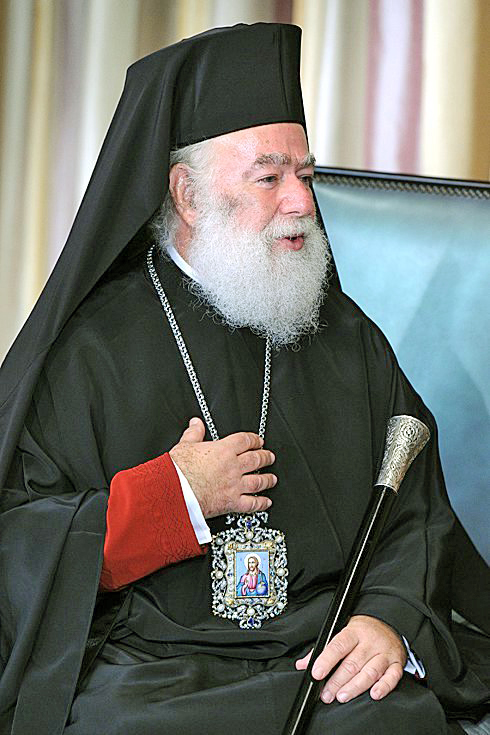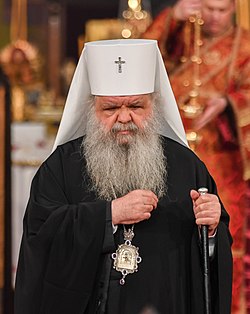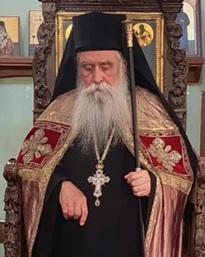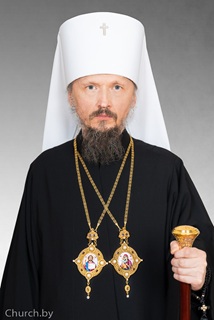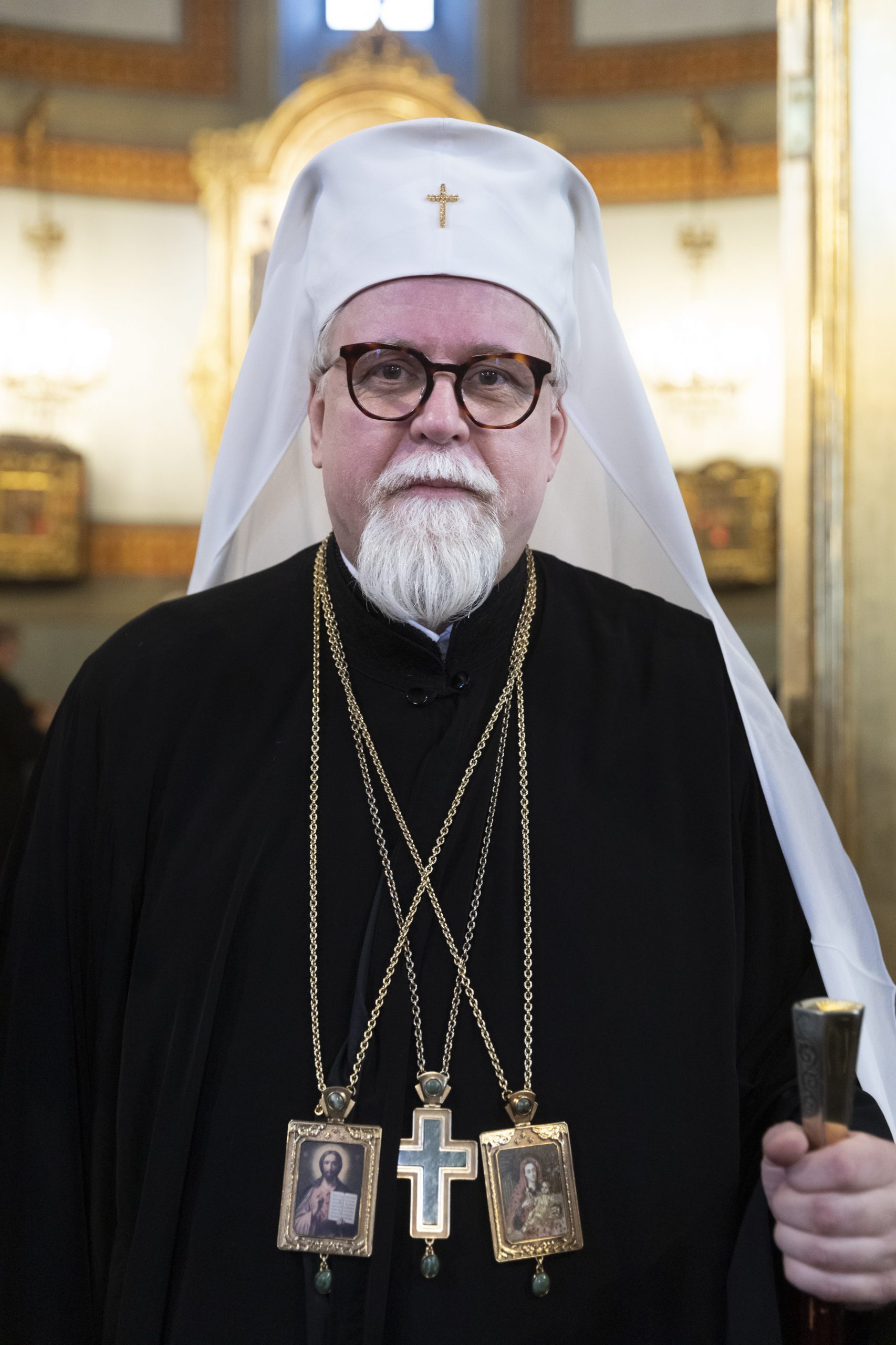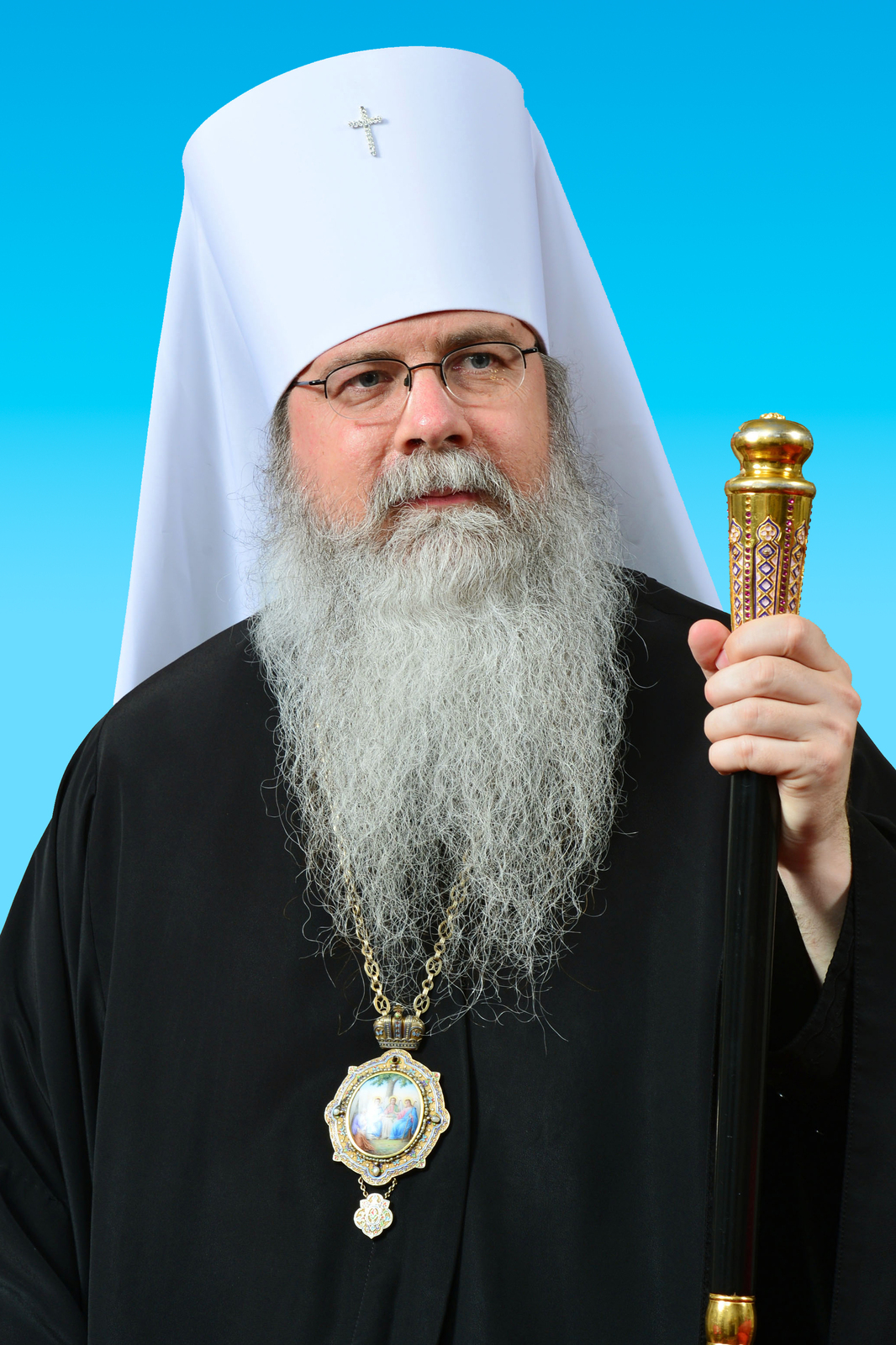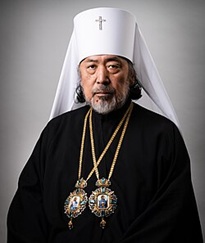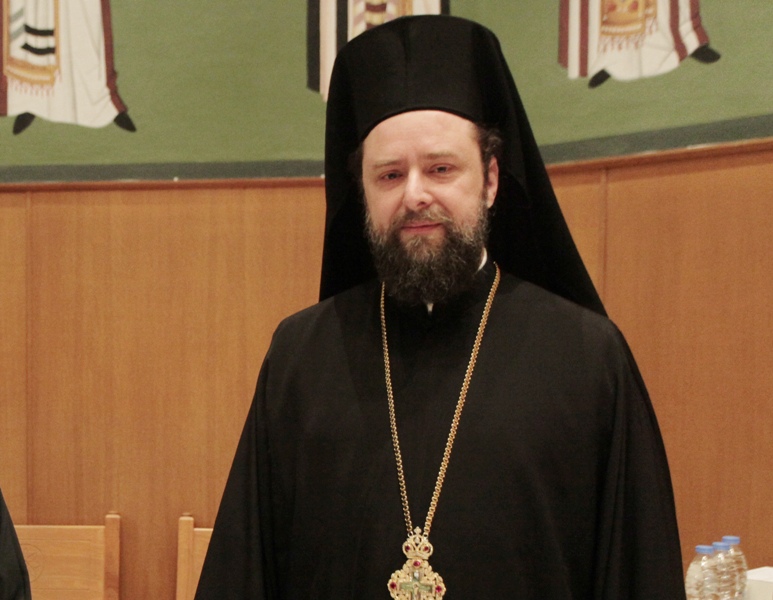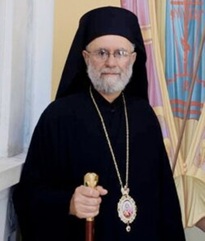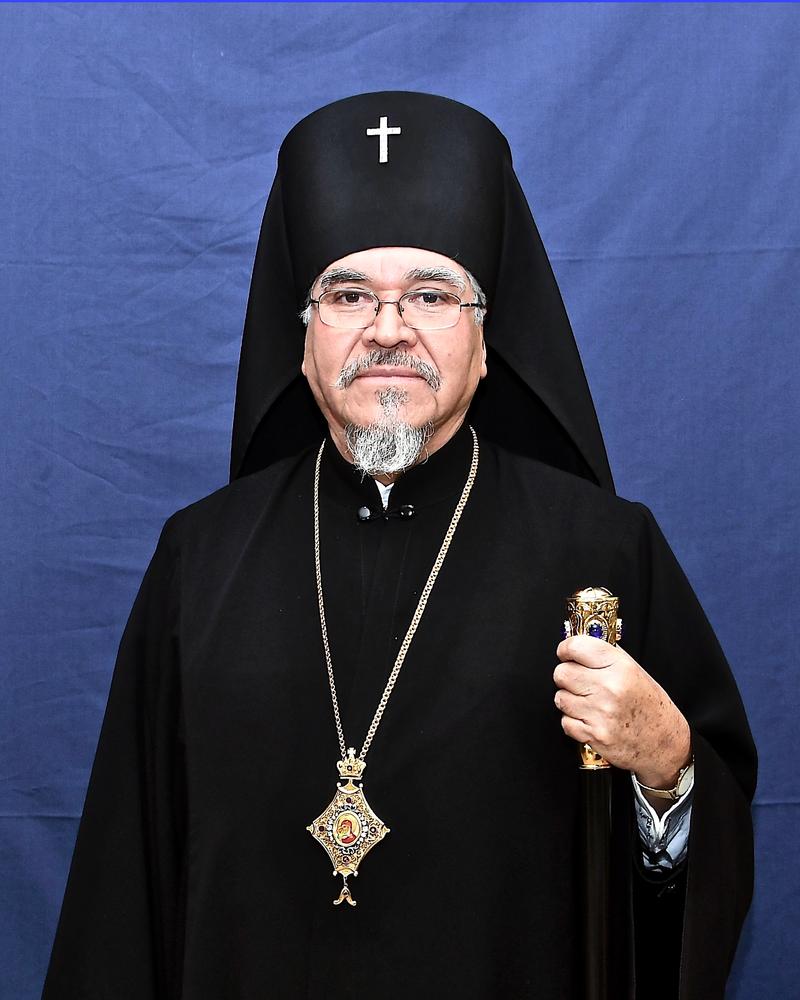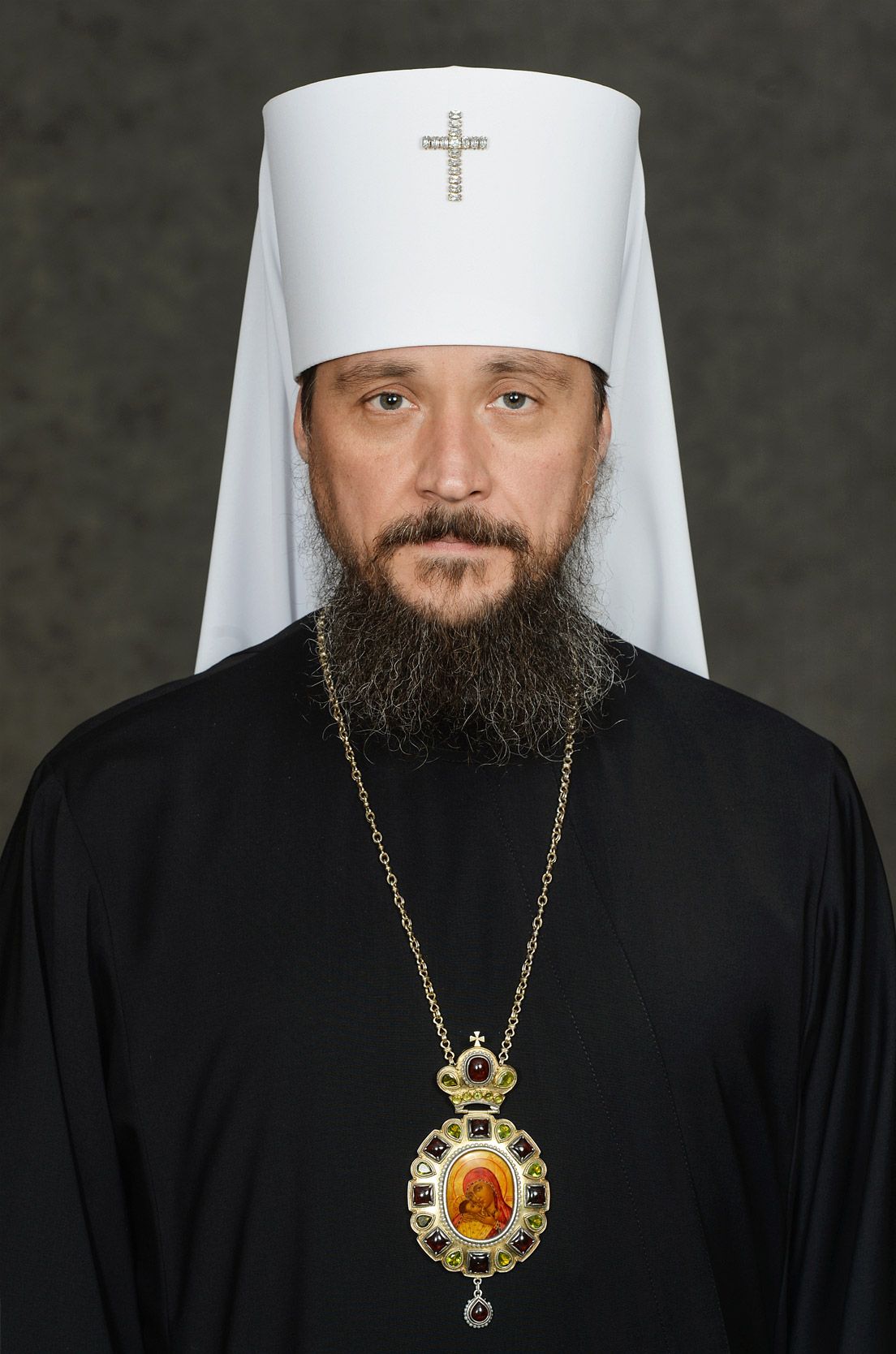CURRENT HIERARCHS OF CHURCHES ESTABLISHED BY THE APOSTLES AND THEIR ORTHODOX SUCCESSORS
CHURCH GOVERNANCE OF HOLY ORTHODOXY
The Holy Orthodox Church was established by our Lord Jesus Christ in 33 A.D. by gathering the faithful remnant of Israel through the disciples, and then sending the Apostles out to preach repentance and forgiveness of sins to all the nations, beginning from Jerusalem. As the Body of Christ, the Church is the living manifestation of His presence here on earth as He works through each and every one of us, and most especially as He is mystically within our midst during the Divine Liturgy. It is organically governed by all members of the Church, but done so with an order and structure established by Christ Himself. This order corresponds to what was laid down in the Torah, such as the twelve tribes of Israel reflected in the twelve apostles, or the seventy elders of the Sanhedrin with the seventy disciples appointed by Christ. But it is also noteworthy to mention that, like Israel under the first covenant, we are all called to be a kingdom of priests (
Exodus 19:6, 1 Peter 2:9). And yet, just as Israel also had a ministerial priesthood under Aaron and his sons (the Levitical order), so Christ has established a ministerial priesthood after the order of Melchizedek (
Hebrews 7:11-22). These are His Bishops, Presbyters, and Deacons, which correspond to the High Priest, Priests, and Levitical Ministers established in the Torah. Together they manifest the Kingdom of Heaven locally in Orthodox temples all around the world, bringing the fullness of what was once foreshadowed in the Jerusalem Temple and its liturgy to all the nations. Like Moses, they are given the authority to make rulings and judgments, and we the faithful are called to obey them.
Our Lord Jesus Christ remains the sole head of His body, the Church, but He ordained and sent out these men to shepherd His flock, who in turn entrust the office of their ministry to others. This whole process can be seen in
the following extensive list of quotations from the Apostolic Scriptures (click to be brought to Bible Gateway, and note that in the ESV translation, appointed means ordain, elder in the Greek is Presbyter, and overseer comes from the Greek where we get Bishop). To help confirm that this is how those Scriptures should be understood, consider St. Clement who, writing in the first century before 70 AD, makes this
Apostolic Succession abundantly clear in his first epistle to the Corinthians (
chapter 44).
St. Ignatius, a disciple of the Apostle John who became the second Bishop of Antioch soon after its establishment by St. Peter, makes it equally clear in the epistles he wrote at the end of his life that the Church is centered around the one Eucharist offered locally by the Bishop, along with his assisting presbyters and deacons. In other words, the fullness of Christ and His Kingdom exists wherever a local Church with its canonical Bishop has been established (for a selection of relevant quotes from St. Ignatius, please
click here). A canonical Bishop is one who has valid Apostolic Succession, meaning not only a direct line through the Episocopal office to the Apostles, but maintaining the same Orthodox faith as recognized by all other canonical Bishops who he remains in communion with. Like the High Priest, Priests, and Levitical Ministers of the Torah, the three-fold office of Bishop, Presbyter (Priest) and Deacon was divinely established in Apostolic times, the specifics of which can be found in appendices A and B of the
EOB Bible.
Bishops are the lead Presbyters who are consecrated to be the Apostolic Successors in a particular area, and thus represent the Apostles as icons of Christ ("He who hears you hears Me, he who rejects you rejects Me, and he who rejects Me rejects Him who sent Me.” as Christ our Lord said to the Apostles whom He ordained and sent out in
Luke 10:1,16). While the fullness of the Church exists locally under each Bishop with his flock and assisting clergy (most especially when the Eucharist is celebrated), as the Church expands you begin to have several Bishops within a given area. These Bishops then
order themselves accordingly (Bishop, Archbishop, Metropolitan, Patriarch), and govern together in a conciliar manner as we read in
Acts 15, thus allowing the Holy Spirit to work freely. They not only hold each other accountable, but remain in communion with other Orthodox Bishops worldwide who provide another level of accountability, meeting together in
Ecumenical Council as needed.
It is therefore the case that a Bishop, regardless of order, cannot leave or break communion with his fellow Bishops and still be considered Orthodox or part of the Church. So, when the Patriarch of Rome went rogue during the early Middle Ages, developing its own new doctrines and splitting from all other historic Patriarchates, it actually left the Church and ceased to be Orthodox since at least 1054. This is in stark contrast to when communion is suspended for a time between individual jurisdictions (creating a minor schism) until a canonical issue (usually of church governance) may be sorted out (i.e. the
current schism between Moscow and Constantinople). Such a scenario can be likened to when Paul and Barnabus split for a time in
Acts 15:36-40. In these latter cases, you will see that I have listed the offending parties Orthodoxy to be in question. However, because these Bishops do not function with a dictatorial primacy or any sense of inerrancy, questioning their Orthodoxy does not mean that their Churches and all therein have ceased to be Orthodox or left the Body of Christ. This point cannot be stressed enough.
Below you will also see Miaphysite Churches which, in contrast to Rome, simply have an alternative way of understanding the natures and wills of Christ which is not universally recognized by those who are fully Orthodox in their Christology (i.e. Chalcedonian). This arose from language barriers and political circumstances that resulted in a severance of communion from Holy Orthodoxy (which sadly remains to this day) between the years of 451 and 610. Likewise, the Assyrian Church of the East, although they confess a Chalcedonian Christology, have also been misunderstood by the other Patriarchates due to language barriers. Therefore, they too are not in communion with Holy Orthodoxy at this time, having initially fell away due to their isolation in the Persian empire. Despite being separated for around 1500 years, however, these Churches have retained the faith with remarkable accuracy, and are working towards solving the language barriers with their understanding of Christology so that communion may be re-established with Canonical Orthodoxy. Nevertheless, they will be distinguished from those who are fully Orthodox in the lists below.
In all the above cases, please note that canonical recognition or lack thereof is how the Body of Christ keeps itself accountable, bringing correction as needed.
THE LIST OF CHURCHES
I have created a relatively exhaustive list of all the Churches established by the Apostles and their Orthodox successors below. I have done this by listing the first hierarch, or primate, of each church, current as of summer 2025. The primate of each Church is the Bishop appointed to be the first in order, officially representing the Church on a global scale. However, it must again be stressed that since Churches are governed in a conciliar manner, these Bishops do not function with a dictatorial primacy or any sense of inerrancy as is claimed by Rome today. Therefore, if it so happens that, for whatever reason, a ruling hierarch's Orthodoxy is in question, that does not mean that the Church is lost and everyone else found within it is no longer Orthodox (and in fact, the rest of the Church have in times past rejected bishops who have forsaken Orthodoxy, such as the actions of the Russian Orthodox Church during the
Council of Florence). It is only when all the bishops and their flock collectively decide to break communion with the rest of the Orthodox Churches that they cease to be Orthodox or belong to the Church (as was the case with Rome).
For each Hierarch and Church / Jurisdiction, I try to list as much relevant data as possible, linking to various Wikipedia articles for more information. While these articles may contain bias and inaccuracies, they are nevertheless excellent starting points. I have also included links to their website and social media when available. For news from all jurisdictions and hierarchs, please visit
OrthoChristian.com (
FB)
Note that certain designations below (for example, "
Greek Orthodox") are not a reference to ethnicity, but it denotes the language that was used historically in the liturgy and theology of the Church (including their received Holy Scriptures, such as the
Greek Septuagint,
Syriac Peshitta, or
Tewahedo Bible). In many instances, the current local languages will now be used instead.
The Churches with their first hierarchs are listed in three categories,
1) CURRENT PATRIARCHS OF HISTORICAL SEES
These are the most established and influential Churches which have been proclaimed Patriarchates.
2) CURRENT HIERARCHS OF OTHER ORTHODOX CHURCHES
These are established self-governing Churches who are not promiment enough to have been declared Patriarchates.
3) OTHER IMPORTANT ORTHODOX HIERARCHS
These are notable missions, dioceses, exarchates, semi-autonomous churches, and self-governing archdioceses in the diaspora.
CURRENT PATRIARCHS OF HISTORICAL SEES
Below is a list of the current hierarch sitting in the office of the Patriarch in the historical Sees established by the Apostles or their Orthodox successors. As mentioned on the
Livestream page, the Patriarch is the highest order of Bishop in the Church and is proclaimed when an area has reached a significant level of development and influence. Each Patriarchate is listed in the order by which it was first established by an Apostle or their successors, and is not reflective of subsequent growth and current prominence (which would have put Russia at the top, unless you count the ungodly colonization of Rome with its heterodox doctrine). While Rome is included due to it being a historical see established by the Apostles, it should be clear that it has not been Orthodox since at least 1054, and therefore any church it has tried to establish since then is not included.
Once again, Church governance has always been conciliar, and so the independence of each Patriarchate doesn't mean that there was a separation in communion (although this was sometimes the case, as with Miaphysite churches), but it simply indicates that they are completely self-governing, reflective of either unique political circumstances, or natural growth and development of the Church in the area.
Patriarch of Jerusalem
(Patriarch of the Holy City of Jerusalem and all Palestine, Israel, Syria, beyond the Jordan River, Cana of Galilee, and Holy Zion)
Established: 33 by St. James the Just on appointment by Christ our Lord
Independence: 451
Patriarchate: 451
(2005-present)
Members: 0.5 million
*Fully Orthodox*
Patriarch of Antioch
Established: 37 by St. Peter the Apostle
Patriarchate: 325
Independence: 519
(2013-present)
Members: 4.3 million
*Fully Orthodox*
Patriarch of Syria
Established: 37 by St. Peter the Apostle
Patriarchate: 325
Independence: 512
(2014-present)
Members: 1.7 million
*Miaphysite*
Patriarch of Persia
Established: 37 by St. Thaddeus the Apostle
Patriarchate: 421
Independence: 424
(2021-present)
Members: 0.4 million
*Christology currently misunderstood by other Patriarchates*
Patriarch of Constantinople
(Archbishop of Constantinople, New Rome and Ecumenical Patriarch)
Established: 38 by St. Andrew the Apostle
Independence: 330
Patriarchate: 381
(1991-present)
Members: 5.45 million
Patriarch of Egypt
Established: 42 by St. Mark the Evangelist
Patriarchate: 325
Independence: 482
(2012-present)
Members: 10 million
*Miaphysite*
Patriarch of Alexandria
Established: 43 by St. Mark the Evangelist
Patriarchate: 325
Independence: 536
(2004-present)
Members: 2.95 million
*Orthodoxy currently in Question*
Patriarch of Armenia
Established: 43 by St. Thaddeus the Apostle
Patriarchate: 301
Independence: 610
(1999-present)
Members: 9 million
*Miaphysite*
Patriarch of India
Established: 52 by St. Thomas the Apostle
Metropolitan: 1653
Patriarchate and Independence: 1912
(2021-present)
Members: 2 million
*Miaphysite*
Patriarch of Rome
Established: 58 by Ss. Peter and Paul, Apostles
Patriarchate: 325
Independence: 476
(2025-present)
Members: 1.406 billion
*Not Orthodox since at least 1054*
Patriarch of Bulgaria
Established: 1st Century by Ss. Paul and Andrew, Apostles
Independence: 870
Patriarchate: 918
(2024-present)
Members: 10 million
*Fully Orthodox*
Patriarch of Ethiopia
(Patriarch and Catholicos of Ethiopia, Archbishop of Axum and Echege of the See of Takla Haymanot)
Established: 328 by the Syrian Greek St. Frumentius
Independence: 1959
Patriarchate: 1959
(2013-present)
Members: 51 million
*Miaphysite*
Patriarch of Eritrea
Established: 328 by the Syrian Greek Frumentius
Independence: 1993
Patriarchate: 1999
(2025-present)
Members: 3 million
*Miaphysite*
Patriarch of Georgia
Established: 334 by St. Nino
Independence: 467, 1010, 1943
Patriarchate: 1010
(1977-present)
Members: 3.5 million
*Fully Orthodox*
Patriarch of Serbia
Established: 632 by the Roman Church
Independence: 1219 by St. Sava until 1453, 1557-1766 (under the Ottoman empire), 1879-present (under a freed Serbian state)
Patriarchate: 1346
(2021-present)
Members: 12 million
*Fully Orthodox*
Patriarch of Russia
Established: 988 by St. Vladimir the Great
Independence: 1488
Patriarchate: 1589
(2009-present)
Members: 110 million
*Fully Orthodox*
Patriarch of Romania
(Archbishop of Bucharest, Metropolitan of Muntenia and Dobrogea, Locum tenens of the throne of Caesarea Cappadociae and Patriarch of All Romania)
Established: By 1234, then as a Metropolitan Diocese in 1359 by St. Hyacinth
Independence: 1865
Patriarchate: 1925
(2007-present)
Members: 19 million
*Fully Orthodox*
CURRENT HIERARCHS OF OTHER ORTHODOX CHURCHES
While the above Patriarchates represent the most historically established, developed, and influential Churches who have jurisdictions and missions worldwide (even in the most isolated regions, such as
North Korea and
Antarctica), there are several other notable hierarchs who lead Churches which are established enough to be self-governing, but do not have either the history or prominence to be declared Patriarchates. As above, they are listed in order of their initial establishment, representing the most significant geographical areas and the original Orthodox presence within them.
When a Church is self-governing but not significant enough to have been declared a Patriarchate, the highest level of Bishop serving as the First Hierarch/Primate will be either an Archbishop or Metropolitan. The Archbishop is usually higher than the Metropolitan in Churches that have more of a Byzantine influence, where as the Metropolitan is higher than the Archbishop in Slavic based Churches (there are, of course, exceptions to this rule).
In the list below, there are two levels of self-governance. Autonomy refers to the ability of the Church or Diocese to govern itself in most matters, but their Primate is still appointed or approved by their mother Church Patriarchate to whose jurisdiction they canonically remain under. Autocephaly means that the Church is now completely independent and self-governing in all matters, including the election and consecration of its Primate. The former always happens before the latter, and as above, complete independence is often the result of unique political circumstances, or natural growth and development of the church in the area.
Archbishop of Cyprus
Established: 45 by St. Barnabus the Apostle of the Seventy
Autocephaly: 431 (abolished in 1260, restored in 1571)
(2022-present)
Members: 0.839 million
*Orthodoxy currently in question*
Archbishop of Greece
Established: 51 by St. Paul the Apostle
Independence: 1833
Autocephaly: 1850
(2008-present)
Members: 15.2 million
*Orthodoxy currently in question*
Archbishop of Macedonia
Established: 1st Century by St. Paul the Apostle where it grew as part of the Bulgarian Orthodox Church, only to be reduced to an archbishopric under Constantinople in 1019 until 1767 when it was abolished by the Ottoman empire. After being re-established as a Bulgarian exarchate in 1870, it eventually comes under the jursidiction of Serbia in 1913.
Autonomy: 1959 by the Serbian Orthodox Church
Autocephaly: Canonically recognized in 2022
(1992-present)
Members: 2 million
*Fully Orthodox*
Archbishop of Albania
Established: 2nd Century under Rome, then transferred to Constaninople in 732.
Autonomy: 1922
Autocephaly: Canonically Recognized in 1937
(2025-present)
Members: 0.8 million
*Fully Orthodox*
Archbishop of Sinai
Established: 565
Autonomy: 1575
Autocephaly: None (currently under the Patriarch of Jerusalem)
Symeon VI
(2025-present)
Governance: By the monastic community
Members: 20 monks and several hundred Bedouins
*Fully Orthodoxy*
Metropolitan of the Czech Lands and Slovakia
(Metropolitan of the Czech Lands and Slovakia)
Established: 9th Century by Ss. Cyril and Methodius
Autonomy: 1921
Autocephaly: 1951
(2014-present)
Members: 0.075 million
*Fully Orthodox*
Metropolitan of Belarus
Established: 988 by St. Vladimir the Great
Autonomy: 1989 by the Moscow Patriarchate
Autocephaly: None, but a full autonomy was declared in 2022 as a response to the Russia-Ukraine War
(2020-present)
Members: 6.89 million
*Fully Orthodox*
Metropolitan of Ukraine
Established: 988 by St. Vladimir the Great
Autonomy: Semi-autonomous in 1990 as a post-Soviet Metropolitan of the Moscow Patriarchate
Autocephaly: None, but a full autonomy was declared in 2022 as a response to the Russia-Ukraine War
(2014-present)
Members: 10 million
*Fully Orthodox*
Metropolitan of Latvia
(Metropolitan of Riga and all Latvia)
Established: 11th Century by the Belarusian Orthodox Church
Autonomy: 1921 by the Russian Orthodox Church, renewed in 1992 after the dissoltuion of the Soviet Union.
Autocephaly: Claimed in 2022 by the Latvian Government in response to the Russia-Ukraine war.
(1990-present)
Members: 0.35 million
*Fully Orthodox*
Archbishop of Finland
Established: 1100's as a mission, 1892 as an Archdiocese
Autonomy: 1921 by the Moscow Patriarchate
Autocephaly: None (Currently under the Patriarch of Constantinople)
(2024-present)
Members: 0.06 million
Metropolitan of Moldova
Established: 1386
Autonomy: 1991 as a post-Soviet Metropolitan of the Moscow Patriarchate
Autocephaly: None (under the Moscow Patriarchate)
(1992-present)
Members: 3.2 million
*Fully Orthodox*
Metropolitan of Estonia
(Metropolitan of Tallinn and All Estonia)
Established: Late Middle-Ages by the Russian Orthodox Church
Autonomy: 1920 by the Moscow Patriarchate, renewed in 1992 after the dissolution of the Soviet Union.
Autocephaly: Claimed in 2024 in response to the Russia-Ukraine war.
(2018-present)
Members: 0.17 million
*Fully Orthodox*
Metropolitan of Poland
(Metropolitan of Warsaw and all Poland)
Established: Organized in 1783 under the Russian Orthodox Church
Autonomy: 1924
Autocephaly: 1948
(1998-present)
Members: 0.5 million
*Fully Orthodox*
Metropolitan of North America
Established: 1794 by Ss. Herman and Innocent of Alaska
Autonomy: 1924
Autocephaly: 1970
(2012-present)
Members: 0.1 million
*Fully Orthodox*
Metropolitan of Japan
(Archbishop of Tokyo, Metropolitan of All Japan)
Established: 1861 by St. Nicholas of Japan
Autonomy: 1970
Autocephaly: None (Under the Moscow Patriarchate)
(2023-present)
Members: 0.03 million
*Fully Orthodox*
OTHER IMPORTANT ORTHODOX HIERARCHS
Finally, these are the hierarchs who lead notable missions, dioceses,
exarchates, semi-autonomous Churches, self-governing Archdioceses in the diaspora, or unique jurisdictions which may not represent geographical areas in the strict sense of the word. Notable dioceses would include those which St. Paul established in Thessalonica, Phillipi, and Corinth, which are not self-governing, but metropolitan sees of the Church of Greece. Along with the semi-autonomous Church of Crete, they are included because of their historical significance, and to once again demonstrate that the original Churches in the New Testament continue to exist under the banner of Holy Orthodoxy.
Regardless of the level of self-governance or lack thereof, these hierarchs would be appointed by their Patriarch, Archbishop, or Metropolitan from the mother Churches above to whom they belong. In other words, none of these jurisdictions are autocephalous (fully independent) like most of the established Churches above. Once again, these are listed in the order by which they were first established by an Apostle or their Orthodox successors.
Metropolitan of Phillipi
Established: 49 by St. Paul the Apostle
Autonomy: None (administered by the Church of Greece)
Autocephaly: None (currently under the Patriarch of Constantinople)
(2010-present)
Governance: By the
Holy Synod of the Church of Greece
Metropolitan of Thessalonica
Established: 51 by St. Paul the Apostle
Autonomy: None (administered by the Church of Greece)
Autocephaly: None (currently under the Patriarch of Constantinople)
(2023-present)
Governance: By the
Holy Synod of the Church of Greece
Metropolitan of Corinth
Established: 51 by St. Paul the Apostle
Autonomy: None (administered by the Church of Greece)
Autocephaly: None (currently under the Patriarch of Constantinople)
(2006-present)
Governance: By the
Holy Synod of the Church of Greece
Archbishop of Crete
Established: 64 by St. Paul the Apostle
Autonomy: Semi-Autonomous since the late Ottoman Period
Autocephaly: None (currently under the Patriarch of Constantinople)
(2022-present)
Archbishop of China
(Archbishop of Beijing and All-China)
Established: 68 by St. Thomas the Apostle, it was under the jurisdiction of the Assyrian Church of the East until its suppression in the 9th century. Christianity was reintroduced in the 1680's by the Russian Orthodox Church, and the Chinese Orthodox Church was re-established in 1715 by Archimandrite Hilarion.
Autonomy: 1957 by the Moscow Patriarchate, but the Church is severely supressed by the Chinese cultural revolution in 1966 and is reduced once again to a mission diocese.
Autocephaly: None (currently under the Moscow Patriarchate)
Vacant
(1956-present)
(pictured is Archbishop Victor who served until 1956)
Governance: By the Holy Synod of the Russian Orthodox Church as a mission diocese.
Members: 0.0015 million
*Fully Orthodoxy*
Catholicos of India and Maphrian of Syriac Orthodox Church
Established: 628 as a
Maphrianate of the Syriac Orthodox Church
Autocephaly: None (currently under the Patriarch of Syria)
(2025-present)
Members: 0.48 million
*Miaphysite*
Metropolitan of the Antiochian Orthodox Christian Archdiocese of North America
Established: 1895 by St. Raphael of Brooklyn
Autonomy: 2002 by the Holy Synod of Antioch
Autocephaly: None (currently under the Patriarch of Antioch)
(2023-present)
Members: 0.0746 million
*Fully Orthodox*
Metropolitan of South Korea
Established: 1900 by the Russian Orthodox Church, and transferred to Constaninople in 1955/56 in response to the communist revolution in Russia.
Autonomy: Semi-Autonomous as a Metropolis of Constantinople since 2004.
Autocephaly: None (currently under the Patriarch of Constantinople)
(2008-present)
Members: 0.0006 million
Archbishop of Canada
Established: 1903 by St. Tikhon of Moscow
Autonomy: None (currently under the Metropolitan of All America and Canada)
Autocephaly: None (currently under the Metropolitan of All America and Canada)
(2014-present)
*Fully Orthodox*
First Hierarch of the Russian Orthodox Church Outside of Russia
Established: 1920 in response to the Communist Revolution in Russia
Autonomy: Semi-Autonomous since re-uniting with Moscow in 2007
Autocephaly: None (currently under the Moscow Patriarchate)
(2022-present)
Members: 0.4 million
*Fully Orthodox*
Archbishop of the Romanian Orthodox Archdiocese of the United States of America
Established: 1929 as a mission diocese of the Romanian Orthodox Church
Autonomy: 1974 by the Holy Synod of Romania
Autocephaly: None (currently under the Patriarchate of Romania)
(2022-present)
*Fully Orthodox*
Metropolitan of Western Europe
(Metropolitan of Chersonesus and Patriarchal exarch in Western Europe)
Established: 1945 by the Russian Orthodox Church, but dissolved in favour of a more direct structure of governance in 1990. In 2018, the exarchate was re-established in response to the Patriarch of Constaninople's uncanonical recognition of schismatics.
Autonomy: None (Currently under the Moscow Patriarchate)
Autocephaly: None (currently under the Moscow Patriarchate)
(2024-present)
*Fully Orthodox*
Archbishop of Mexico
(Archbishop of the Diocese of Mexico of the Orthodox Church in America)
Established: 1972 by Archbishop Dimitry
Autonomy: None (currently under the Metropolitan of All America and Canada)
Autocephaly: None (currently under the Metropolitan of All America and Canada)
(2009-present)
*Fully Orthodox*
Metropolitan of Hong Kong
(Metropolitan of Hong Kong and Southeast Asia)
Established: 1996 by the Holy Synod of Constantinople
Autonomy: None (currently under the Patriarch of Constantinople)
Autocephaly: None (currently under the Patriarch of Constantinople)
(2008-present)
Metropolitan of South-East Asia
(Metropolitan of Singapore and Southeast Asia)
Established: 2018 by the Holy Synod of the Russian Orthodox Church in response to the Patriarch of Constaninople's uncanonical recognition of schismatics.
Autonomy: None (Currently under the Moscow Patriarchate)
Autocephaly: None (currently under the Moscow Patriarchate)
(2019-present)
*Fully Orthodox*
Metropolitan of Africa
(Titular Metropolitan of Zaraisk, Patriarchal Exarch of Africa)
Established: 2021 in response to the Patriarch of Alexandria's recognition of schismatics and the subsequent pastoral needs of the faithful.
Autonomy: None (Currently under the Moscow Patriarchate)
Autocephaly: None (currently under the Moscow Patriarchate)
(2023-present)
Members: About 350 parishes in 34 countries, and 3 monastic communities.
*Fully Orthodox*
* * * * * * *
* * * * * * *
